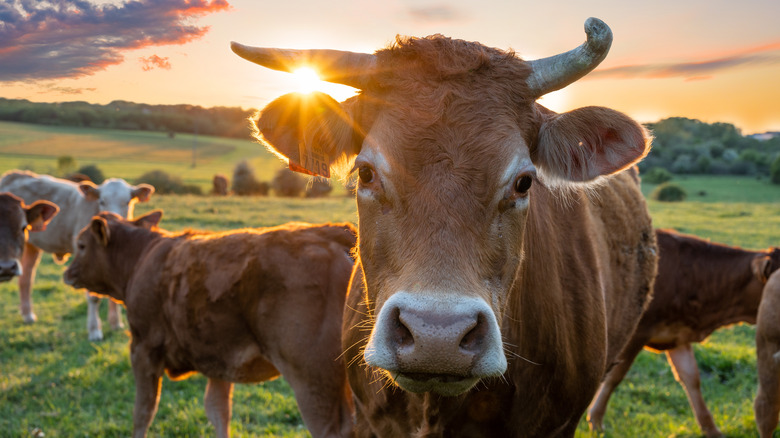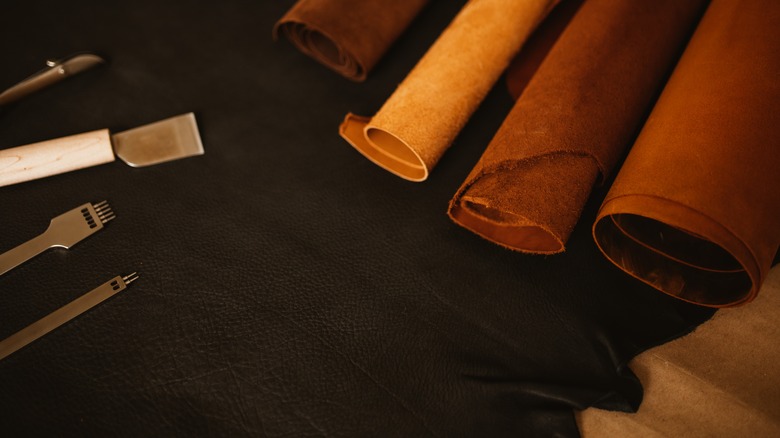What Happens To Beef Cow Parts That Aren't Turned Into Food?
Certain parts of the cow, such as the tongue, are considered a Japanese delicacy, as per the United States Department of Agriculture (USDA). However, as you might imagine, not all parts of a cow are food. By-products like hide, hooves, and skeletal structure are less favorable for human consumption.
Beef is a big business in America, and according to the USDA's National Agricultural Statistics Service, as of January 2022, there are 30.1 million beef cows in the United States. If one were to convert this to weight, it would amount to more than 27 billion pounds of red meat, per Statista. Ironically, only 63% of every cow is used for human fodder, per Penn State Extension.
Because we live in a world where sustainability is consumer-driven with food consciousness being a growing trend, these statistics raise questions. We have to ask: what happens to the rest of the cow carcass, and does it significantly contribute to the world's wasted meat?
The inedible parts of a cow
The bovine beast's carcass constitutes a substantial amount of raw material, per the United States Department of Agriculture. Thanks to ingenuity, a fair amount of the remains become by-products. The cowhide (leather) is likely the best-known nonfood product, and rightfully so, as it accounts for 75% of all cow by-products. The latter already gives us a general idea of what percentage of carcasses are non-food products.
The bones, horns, and hooves, which are the least edible, are used for things like buttons, glues, fertilizer, gelatins, and ointments, among other things. A fat component derived from cattle, known as tallow, is utilized in the beauty industry as an ingredient in body soap, shaving creams, and other products, like crayons, and paints, per Animal Smart.
Although the American husbandry sector spews out 1.4 billion tons of livestock waste annually (via The Atlantic), the beef cow industry certainly seems to be doing its part for sustainability.

